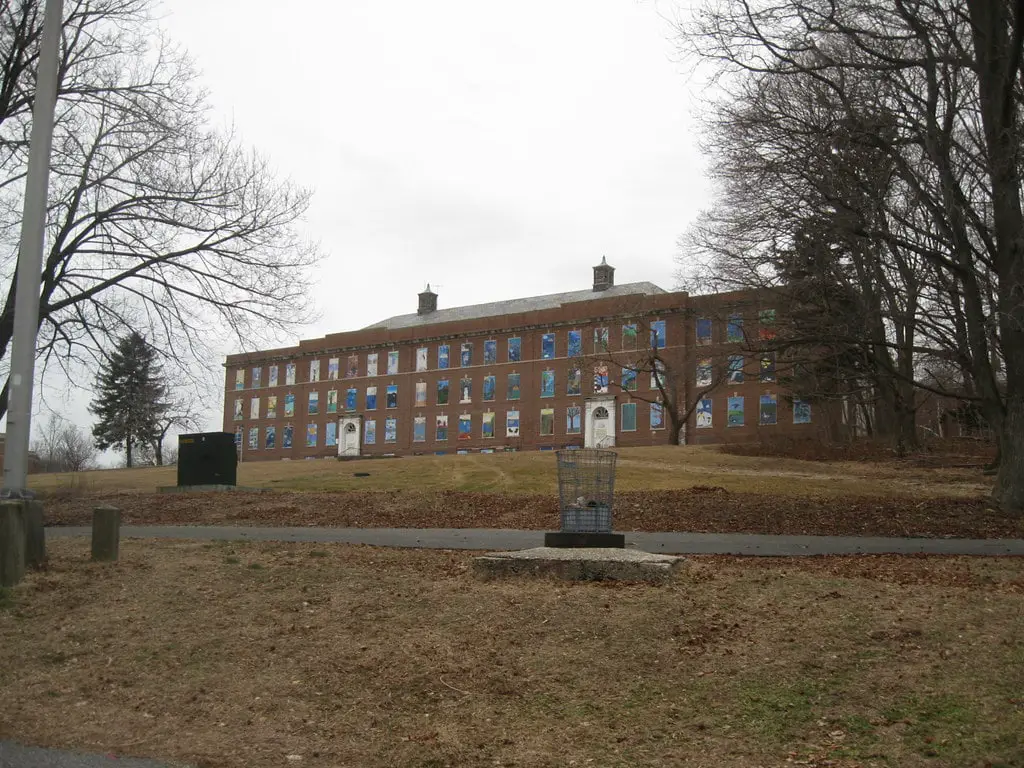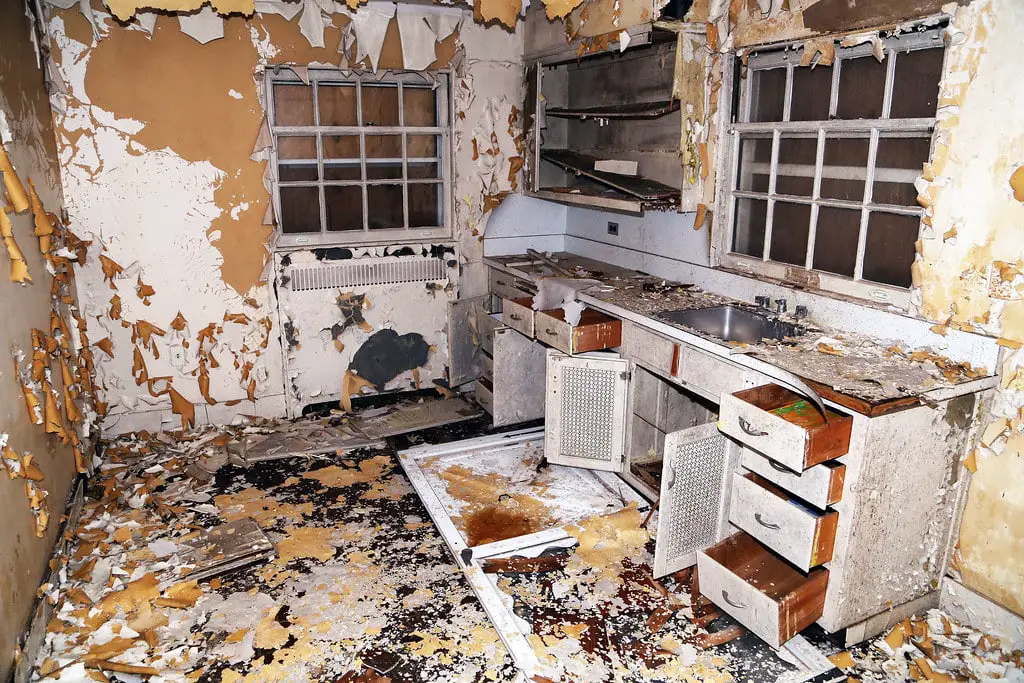Kings Park Asylum, officially known as the Kings Park Psychiatric Center (KPPC), was a state-run psychiatric hospital in Kings Park, New York. Operational from 1885 to 1996, the facility aimed to revolutionize mental health care with its innovative “farm colony” approach.
However, as the hospital grew, so did its patient population, and overcrowding became a significant issue. Advances in medication and new treatment methods eventually decreased the need for such large-scale institutions, and the hospital finally closed its doors in 1996.
Today, the abandoned asylum is a haunting reminder of a bygone era in mental health treatment, shrouded in urban legends and controversies.
Founding and Evolution of the Kings Park Asylum
The Kings Park Psychiatric Center was founded in 1885 by Kings County, situated in the neighboring Suffolk County. For the first decade, the institution was officially known as the Kings County Asylum, named after the county in which Brooklyn is located.
The asylum was considered revolutionary at the time because it was a departure from the overcrowded asylums known for human rights abuses. Instead, it functioned as a “farm colony” asylum, where patients participated in various farm-related activities as a form of therapy.
As the Kings County Asylum began to suffer from overcrowding, the asylum’s control passed into New York State‘s hands in 1895 and was renamed the Kings Park State Hospital. The surrounding community also adopted the name “Kings Park.”
The state transformed the hospital into a self-sufficient community with its infrastructure, including heat and electricity generation, an on-site Long Island Rail Road spur, and staff housing.
Throughout the early 1900s, the medical facility experienced ongoing expansion. Finally, in the late 1930s, the state began building vertically, leading to the construction of the famous 13-story Building 93, completed in 1939.
State architect William E. Haugaard designed the building, financed through Works Progress Administration funds. The building was an infirmary for geriatric patients and those with chronic physical ailments.
Following World War II, patient populations at Kings Park and other Long Island asylums increased significantly. In 1954, the patient population at Kings Park peaked at 9,303 individuals. As time passed, the old “rest and relaxation” philosophy surrounding farming was replaced by more invasive techniques such as pre-frontal lobotomies and electroshock therapy.
However, these methods were largely abandoned after 1955 due to the introduction of Thorazine, the first widely used drug in treating mental illness. This development allowed patients to live everyday lives outside of mental institutions, causing a decline in the patient population.

Closure and Preservation Efforts
By the early 1990s, the Kings Park Psychiatric Center had significantly downsized, with numerous buildings closed or barely in use. The New York State Office of Mental Health devised plans to shut down Kings Park and another Long Island institution, the Central Islip Psychiatric Center.
USA Quiz
How many questions would you like?
These plans involved transferring the remaining patients from both centers to the still-functioning Pilgrim Psychiatric Center or discharging them. The projects were implemented in the fall of 1996, ending Kings Park’s 111-year run.
Since its closure, trespassing, and vandalism have become significant problems at the abandoned facility, particularly in Building 93. The asylum is also reputed to be haunted, attracting paranormal enthusiasts, amateur writers, and photographers.
In 2000, the waterfront section of the former campus was transformed into the Nissequogue River State Park, ensuring its protection from development. However, obstacles to development remain, such as asbestos in the remaining buildings and buried ash from the hospital’s power generation facilities.
Notable Patients, Staff, and Urban Legends
Kings Park Asylum has housed several notable patients, including John R. Buckmaster, Jim Clinton, Percy Crosby, and West Funk. Staff members who worked at the facility include David J. Impastato and Olga Von Tauber.
Urban legends and controversies surrounding the asylum have contributed to its mystique, such as the haunting of Building 93 and the legend of Mary Hatchet. According to the legend, Mary Hatchet was a patient who committed violent acts within the asylum, and her ghost is said to roam the grounds still.
Kings Park Asylum in Popular Culture
The abandoned asylum has served as a setting for various movies and documentaries. In 1995, the movie “Eyes Beyond Seeing” was filmed in KPPC’s Building 136/137 and featured exterior shots of Building 93. The film featured Keith Hamilton Cobb as an individual with a mental health condition who claimed to be Jesus Christ and included a cameo appearance by Henny Youngman.

In 2009, the film “Blood Night: The Legend of Mary Hatchet” premiered, written and directed by Frank Sabatella. This movie tells a version of the urban legend associated with the asylum through a ghost story about a patient admitted to KPPC.
Building 93 of the psychiatric center was prominent in the 2010 thriller “Peripheral Vision,” directed by filmmaker Michael D. D’Andrea.
In 2013, the documentary “Kings Park: Stories from an American Mental Institution” by former patient Lucy Winer was released on DVD and in theaters. The documentary explores the history and enduring legacy of the institution.

Conclusion
The abandoned Kings Park Asylum continues to intrigue and mystify with its rich history and unique evolution. Yet, while the asylum’s role in popular culture and the urban legends surrounding it have contributed to its notoriety, the site also serves as a testament to a bygone era in mental health care.
As preservation efforts continue and the property’s future remains uncertain, Kings Park Asylum stands as a haunting reminder of a dark and fascinating chapter in the history of mental health treatment.

Frequently Asked Questions
When was Kings Park Asylum established?
The Kings Park Asylum, officially called the Kings Park Psychiatric Center, was founded in 1885.
When did Kings Park psychiatric hospital close?
The Kings Park Psychiatric Center closed its doors in 1996.
What happened to the Kings Park Psychiatric Center?
The Kings Park Psychiatric Center shut its doors in 1996 due to decreasing patients and a transition towards community-oriented mental health care services.
Why is Kings Park Psychiatric Center abandoned?
The center was abandoned after its closure because of the shift in mental health care towards smaller community-based facilities and the introduction of effective medications for treating mental illnesses.
Are there any urban legends associated with Kings Park Asylum?
Several urban legends are associated with the asylum, including the haunting of Building 93 and the legend of Mary Hatchet.
Can you visit Kings Park Psychiatric Center?
While the Kings Park Psychiatric Center’s grounds are now part of the Nissequogue River State Park and can be visited, entering the abandoned buildings is illegal and not advised due to safety concerns and potentially hazardous materials such as asbestos.
Is there asbestos in Kings Park?
Yes, asbestos is in some of the abandoned buildings in Kings Park Psychiatric Center, which poses a safety risk and complicates the potential redevelopment of the site.
What is the largest psychiatric hospital ever built?
Pilgrim State Hospital in Brentwood, New York, was once considered the largest psychiatric hospital in the world, with a patient population of over 13,000 at its peak.
Were bodies found in Pilgrim State?
There have been reports of unmarked graves and remains found on the grounds of Pilgrim State Hospital, which was another sizeable psychiatric facility in New York but not directly related to Kings Park Psychiatric Center.
What is the oldest psychiatric hospital in NY?
The Bloomingdale Asylum, now known as the New York-Presbyterian Westchester Behavioral Health Center, is the oldest psychiatric hospital in New York. It was founded in 1821.
What is the oldest psych ward in America?
The Eastern State Hospital in Williamsburg, Virginia, is considered the oldest psychiatric hospital in the United States. It was founded in 1773.

